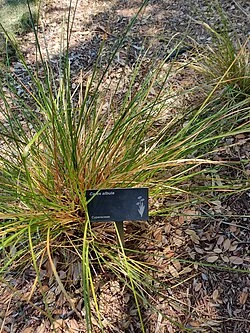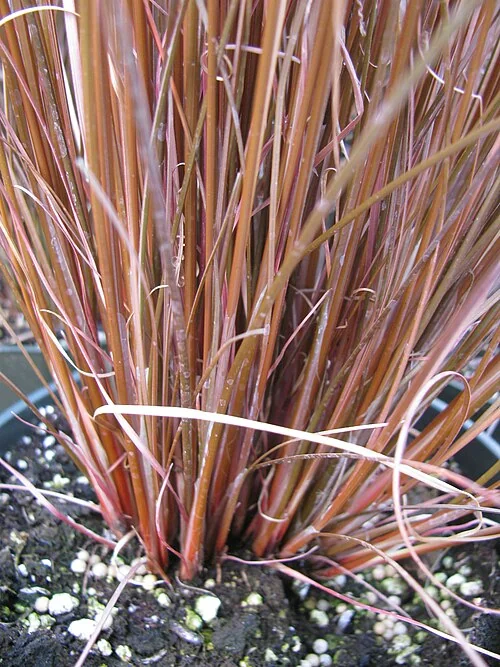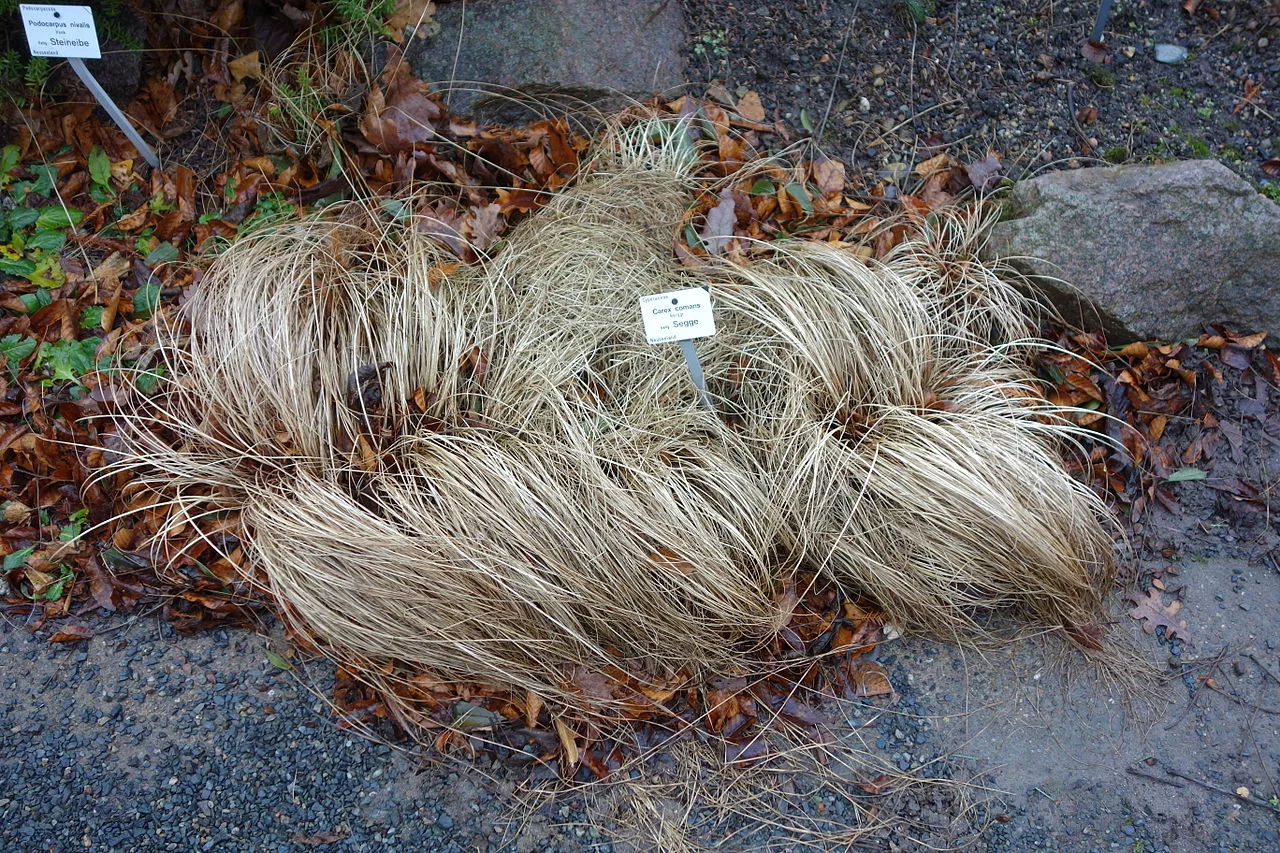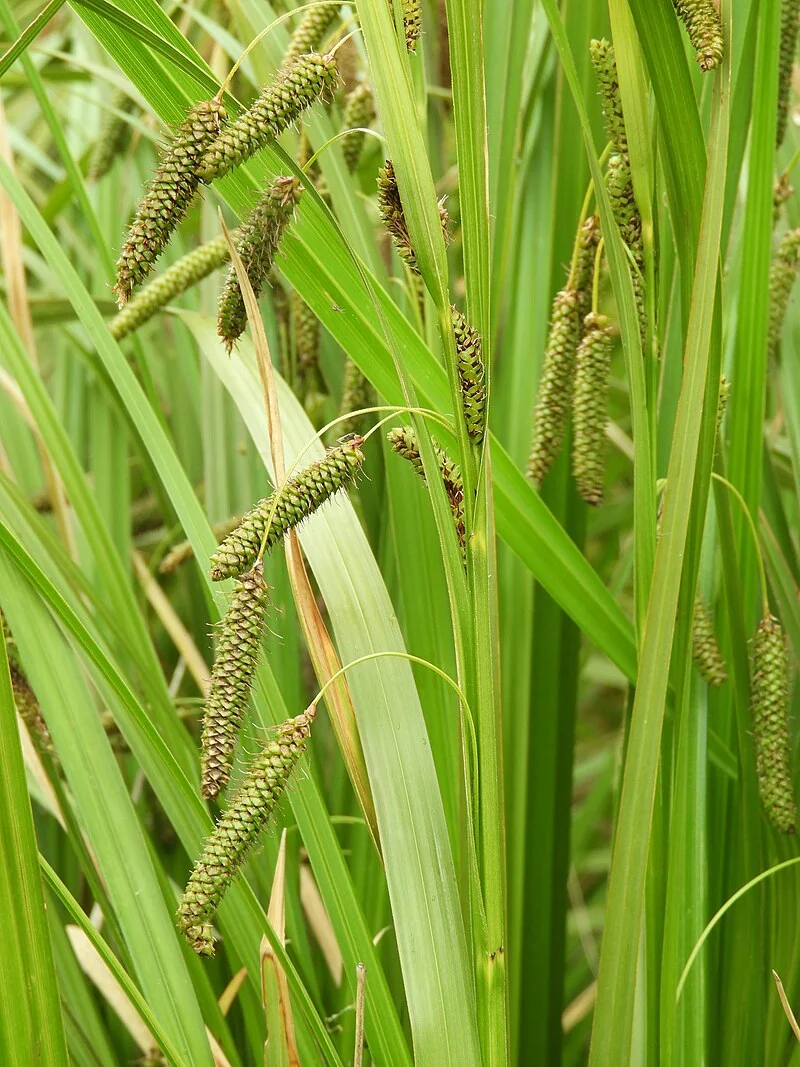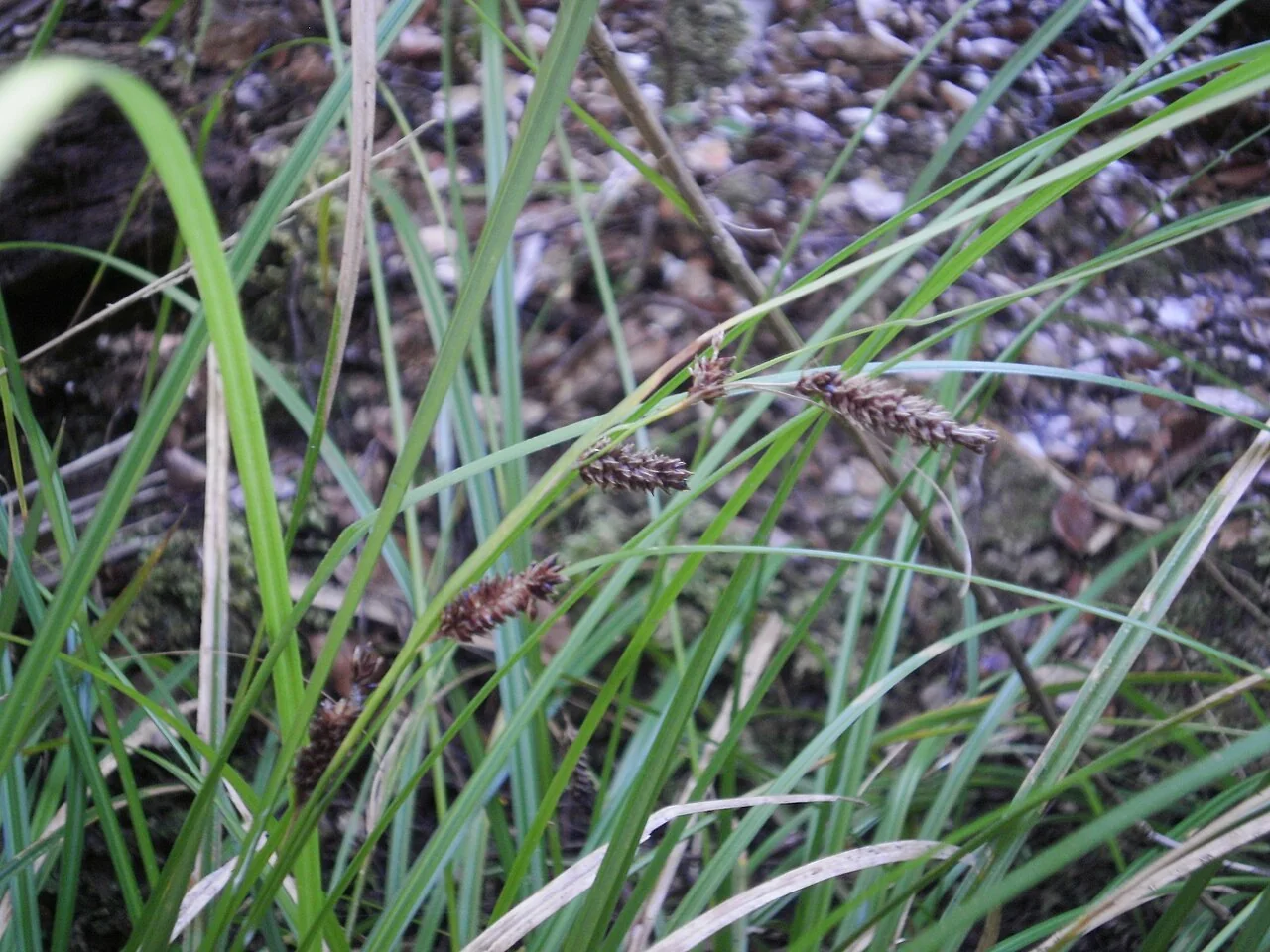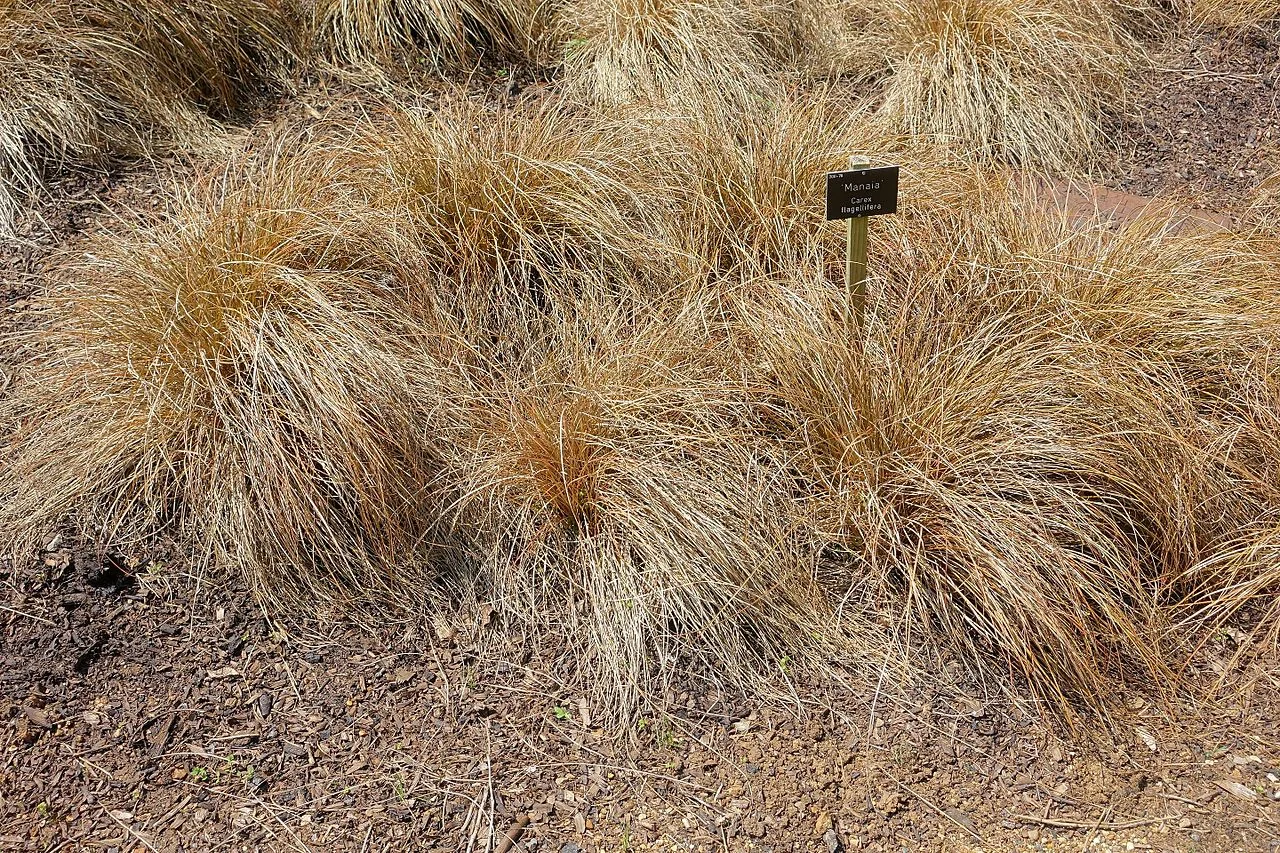
Monro's Daisy
Brachyglottis monroi
Explore more NZ native plant guides in our index .
Introduction
About Monro's Daisy
Brachyglottis monroi , commonly known as Monro's Daisy, is a compact, evergreen shrub native to the South Island of New Zealand. It is characterized by its small, leathery, grey-green leaves with wavy margins and bright yellow, daisy-like flowers that bloom in summer. This hardy plant is well-suited for rock gardens, borders, and coastal areas.

Plant Description
Brachyglottis monroi , commonly known as Monro's Daisy, is a compact, evergreen shrub native to the South Island of New Zealand. It typically grows to a height and spread of 1 to 1.5 meters. Its most distinctive features are its small, leathery, grey-green leaves with wavy margins, which are often covered in a dense, white, felt-like layer on the underside. In summer, it produces abundant clusters of bright yellow, daisy-like flowers, adding a cheerful splash of color to its surroundings. This hardy plant is well-adapted to montane to sub-alpine shrubland and rocky areas, and is notably tolerant of coastal exposure, wind, and drought once established.
Quick Facts
Plant Summary
| Scientific Name | Brachyglottis monroi |
|---|---|
| Height | 0.5-1 m |
| Spread | 0.5-1 m |
| Water Needs | Low to moderate; prefers well-drained soil |
| Light | Full sun to partial shade |
| Frost Tolerance | High |
| Salt Tolerance | High |
| Growth Rate | Moderate |
| Lifespan | Perennial |
Climate Best Suited to
Brachyglottis monroi is found in coastal and lowland areas of the South Island of New Zealand, particularly in Marlborough and Nelson. It thrives in a mild, temperate climate and is particularly tolerant of coastal conditions, including salt spray.
Regional Suitability
| City | Climate Suitability |
|---|---|
| Whangārei | Ideal |
| Auckland | Ideal |
| Hamilton | Ideal |
| Tauranga | Ideal |
| Rotorua | Ideal |
| Gisborne | Ideal |
| New Plymouth | Ideal |
| Napier | Ideal |
| Whanganui | Ideal |
| Palmerston North | Ideal |
| Wellington | Ideal |
| Nelson | Ideal |
| Christchurch | Ideal |
| Dunedin | Ideal |
| Invercargill | Ideal |
Habitat
Brachyglottis monroi , commonly known as Monro's Daisy, is an evergreen shrub native to the South Island of New Zealand, specifically found in the Marlborough and North Canterbury regions. It thrives in montane to subalpine shrubland and rocky places, often colonizing exposed sites.
This hardy plant is well-adapted to challenging conditions, including hot sun, poor soils, strong winds, drought, and coastal exposure. It prefers well-drained soil and full sun, though it can tolerate partial shade. Its natural resilience allows it to flourish in areas where many other plants would struggle, making it a significant component of these harsh environments. However, it does not tolerate high humidity well, which is a key factor in its distribution.
Plant Conservation
Brachyglottis monroi is classified as "Not Threatened" under the New Zealand Threat Classification System. This endemic shrub is found in the South Island's Marlborough and North Canterbury regions, where it occupies specialized montane to subalpine habitats in rocky places and shrubland.
As an endemic New Zealand species, Monro's Daisy represents part of the country's remarkable native flora diversity, with New Zealand having 82% of its vascular plant species found nowhere else in the world. This high level of endemism has led to New Zealand being recognized as a global biodiversity hotspot and "Centre of Plant Diversity."
While currently stable, the species faces potential threats common to New Zealand's native plants, including habitat modification, browsing pressure from introduced animals, and competition from invasive weeds. Its specialized habitat requirements in montane and subalpine environments make monitoring important to ensure long-term population stability.
Conservation efforts benefit from cultivation in appropriate garden settings, as this reduces collection pressure on wild populations while raising awareness of New Zealand's unique native flora. The species' adaptability to challenging growing conditions makes it valuable for restoration projects in suitable habitat areas.
Growing Requirements
Soil Requirements
Prefers well-drained, fertile soil with good organic content. Tolerant of a wide range of soil types, including sandy and clay soils.
Light Requirements
Grows best in full sun but will tolerate partial shade.
Water Requirements
Requires consistent moisture, especially during dry periods. Once established, it is drought-tolerant.
Planting Guide
-
When to Plant
Plant in autumn or spring.
-
Site Preparation
Choose a sunny or partially shaded site with well-drained soil.
-
Planting and Aftercare
Dig a hole twice the width of the pot. Place the plant in the hole and backfill with soil. Water well and apply a layer of mulch.
Ecological Significance
Brachyglottis monroi , also known as Monro's Daisy, holds several ecological significances, particularly in its native New Zealand habitat, contributing to the health and resilience of montane to subalpine ecosystems.
- Pollinator Support: The plant is a valuable source of nectar and pollen, attracting and supporting bees and various other pollinating insects. This contributes to insect biodiversity and the reproductive success of other flora in its ecosystem, especially in its often harsh, exposed habitats.
- Habitat and Resilience: Native to the South Island, it thrives in montane to subalpine scrub and rocky areas, particularly in the Kaikoura Ranges. Its hardiness, evergreen nature, and tolerance to dry conditions, strong winds, and maritime exposure allow it to contribute to the stability and biodiversity of these specific, often challenging, environments.
- Shelter and Windbreak: Brachyglottis monroi can form dense hedges and act as a natural windbreak, potentially creating microclimates and providing shelter for other plant and animal species in exposed locations.
- Reproduction and Dispersal: As a hermaphrodite species, it possesses both male and female reproductive organs, and its flowers are pollinated by insects. Its pappate achenes are efficiently dispersed by wind, allowing for the colonization of new suitable areas and contributing to its widespread presence in its preferred habitats.
- Restoration Potential: It is recognized as a suitable species for ecological restoration efforts, indicating its utility in re-establishing native plant communities and aiding in ecosystem recovery in degraded or disturbed montane and subalpine areas.
Uses and Significance
Garden Uses
- An excellent plant for rock gardens, borders, and coastal areas.
- Its compact size and cheerful flowers make it a charming addition to any landscape.
Landscaping Uses
Brachyglottis monroi , commonly known as Monro's Daisy, is a versatile and hardy evergreen shrub highly valued for its landscaping uses, particularly in challenging environments. Its natural tolerance to wind, drought, and coastal exposure makes it an excellent choice for a variety of garden settings.
- Borders and Group Plantings: It can be used effectively in borders and group plantings, creating a cohesive and attractive display. Its compact size also makes it suitable as a standalone feature plant.
- Adding Texture and Color: The plant's small, leathery, grey-green leaves with wavy margins provide excellent textural contrast with other green shrubs and grasses. Its bright yellow, daisy-like flowers, blooming in summer, add a cheerful splash of color to the landscape.
- Low Maintenance Gardens: Once established, Brachyglottis monroi requires minimal care, making it an ideal choice for sustainable and low-maintenance garden designs, especially in areas prone to dry conditions.
- Specific Garden Styles: It is well-suited for city and courtyard gardens, Mediterranean climate plants, and wildlife gardens, as it provides nectar and pollen for bees and other pollinating insects, enhancing biodiversity.
- Seaside and Salt Tolerance: Its resilience to seaside conditions, including salt spray and strong winds, makes it a good option for coastal landscapes where many other plants struggle.
- Deer Resistance: The plant is also noted for being deer resistant, which is a valuable trait in areas where deer browsing is a concern.
- Hedging and Shelter: It can be utilized for low hedging or as a shelter plant, providing protection for more delicate plants or creating defined garden spaces.
Brachyglottis monroi typically grows to 1 to 2 meters tall and 1 to 1.5 meters wide, forming a compact, rounded shrub. It thrives in full sun and well-drained soil, adapting to various soil conditions including chalk, loam, and sand.
Seasonal Care Calendar
Spring
- Apply a balanced fertilizer and a layer of mulch.
Summer
- Water regularly, especially during dry periods.
Autumn
- No special care required.
Winter
- Protect from heavy frosts in colder regions.
Pruning and Maintenance
Deadheading and Tidying
Remove spent flower stalks to encourage new blooms and maintain a tidy appearance. Old or damaged leaves can be removed as needed.
How to Grow Monro's Daisy
From Semi-Hardwood Cuttings
Semi-hardwood cutting propagation represents the most reliable and straightforward method for multiplying Monro's Daisy, taking advantage of this hardy coastal shrub's natural ability to develop roots readily from stem cuttings during the active growing season. This technique is particularly valuable for maintaining the exact characteristics of superior garden forms and for creating multiple plants from proven specimens that have adapted well to local coastal conditions. The optimal timing for taking cuttings is during late spring to early summer when new growth has begun to firm up but retains sufficient flexibility for successful rooting, typically 8-12 weeks after the initial spring growth flush. Select healthy, vigorous, non-flowering shoots from the current season's growth that are approximately 10-15cm in length, choosing material from the outer portions of the plant where growth is most active and disease-free. Take cuttings early in the morning when plant tissues are fully hydrated, using clean, sharp secateurs to make clean cuts just below a leaf node where root development will be most successful. Remove the lower leaves from each cutting, leaving only 2-3 pairs of upper leaves to reduce moisture loss while maintaining sufficient photosynthetic capacity for energy production during the rooting phase. Prepare a well-draining cutting medium using equal parts peat moss, perlite, and coarse sand that provides the excellent drainage essential for preventing cutting rot while maintaining adequate moisture levels. Dip cutting bases in rooting hormone containing IBA (indole-3-butyric acid) to encourage rapid and uniform root development, though this robust species often roots readily without chemical treatment. Insert cuttings into the prepared medium, ensuring good contact between the cutting base and growing medium while maintaining adequate spacing to allow good air circulation around each cutting. Place cutting containers in a protected environment with bright, indirect light and high humidity, using misting systems or humidity domes to maintain optimal conditions for root development without causing fungal problems. Maintain temperatures around 18-22°C and provide bottom heat if available to encourage root formation, which typically occurs within 4-6 weeks under suitable conditions. Monitor cuttings regularly for signs of new growth and root development, gradually reducing humidity as roots establish to prevent moisture-related diseases. This method strikes reliably under warmth and humidity and is particularly effective for commercial production and home gardening applications.
From Seeds
Seed propagation offers an authentic and economical method for growing Monro's Daisy that maintains the genetic diversity essential for this hardy New Zealand coastal shrub species. This method is particularly valuable for restoration projects, large-scale plantings, and for gardeners interested in understanding the complete reproductive cycle of this important native plant. Monro's Daisy produces abundant small, fluffy seeds equipped with pappus structures that aid in natural wind dispersal, typically ripening during late summer to early autumn following the bright yellow daisy-like flowers that appear in terminal corymbs throughout summer. For successful seed collection, monitor flower heads closely as they progress from bright yellow blooms to dried seed heads with fluffy white or pale brown appearance, indicating peak seed maturity and viability. Collect seeds on a calm, dry day when seed heads have fully matured but have not yet begun to disperse naturally, cutting entire seed heads with clean secateurs and placing them in paper bags to complete drying. Fresh seed collected from the plant provides the best germination rates and should be sown as soon as possible after collection to maintain maximum viability. Sow seeds in spring on the surface of a well-draining seed-raising mix, using a combination of quality seed compost, coarse sand, and perlite to ensure the excellent drainage essential for preventing seed rot. Lightly press seeds into the growing medium surface but do not bury them completely, as they require light for optimal germination and many coastal species are adapted to surface germination conditions. Place seed trays in a bright location with indirect sunlight, avoiding direct sun which can overheat the growing medium and reduce germination success. Maintain consistent temperatures around 18-21°C throughout the germination period, providing bottom heat if necessary to achieve optimal conditions. Keep the growing medium consistently moist but not waterlogged, using fine misting to avoid disturbing the small seeds while maintaining adequate moisture levels. Germination typically occurs within 2-4 weeks under suitable conditions, though some seeds may take longer to emerge depending on their maturity and storage conditions. Young seedlings develop slowly initially but form robust root systems characteristic of coastal-adapted species, requiring patience and consistent care during their early growth phases.
From Division
Division propagation provides an effective method for multiplying established Monro's Daisy shrubs, particularly valuable for rejuvenating older specimens that may have developed woody centers or for creating new plants from proven garden performers that have demonstrated superior coastal tolerance. This method takes advantage of the plant's natural tendency to develop multiple stems from the base, creating opportunities for careful separation into individual plants. The optimal timing for division is during early spring just as new growth begins to emerge, allowing divided sections the full growing season to establish robust root systems before facing winter stress. Begin the process by carefully examining the base of established shrubs to identify natural separation points where individual stems have developed their own root systems, typically visible as distinct growing centers with associated fibrous roots. Prepare for division by thoroughly watering the parent plant several days beforehand to ensure tissues are fully hydrated and less likely to suffer transplant shock during the separation process. Carefully excavate around the base of the shrub using a garden fork, working gradually to expose the root system while preserving as much of the delicate feeder roots as possible. Once the root structure is visible, identify the best division points where natural separations exist between stems, ensuring each potential division includes both healthy root material and sufficient top growth to support the plant during establishment. Use a clean, sharp spade or knife to carefully separate the divisions, making clean cuts through connecting root material while minimizing damage to the individual root systems. Each division should include at least 2-3 healthy stems with well-developed root systems to ensure successful establishment. Prepare planting sites with well-draining soil amended with compost or other organic matter to improve soil structure and water retention, particularly important for newly divided plants that require consistent moisture during establishment. Plant divisions at the same depth they were previously growing, spacing them according to their mature size while considering the species' spreading habit and coastal garden requirements. Water thoroughly after planting and maintain consistent moisture throughout the first growing season, applying organic mulch around each division to conserve soil moisture and suppress weed competition.
Pests and Diseases
Naturally Robust
Generally pest and disease free.
Watch for scale and fungal leaf spots; improve airflow and avoid over-watering to limit disease pressure.
Cultural Significance
While not as widely documented for traditional Māori uses as some other native plants, Monro's Daisy (Brachyglottis monroi) was recognized for its presence in the high-country landscape. Its bright yellow flowers would have been a familiar sight to those travelling through or gathering resources in alpine areas.
Bonus Tip
This hardy New Zealand native shrub is not only drought, wind, and coastal tolerant, making it excellent for challenging garden spots, but its distinctive crinkly-edged, olive-green leaves with fuzzy white undersides provide year-round visual interest, often being as attractive as its bright yellow summer flowers. It's also a low-maintenance plant once established and provides nectar and pollen for bees, contributing to local biodiversity.

